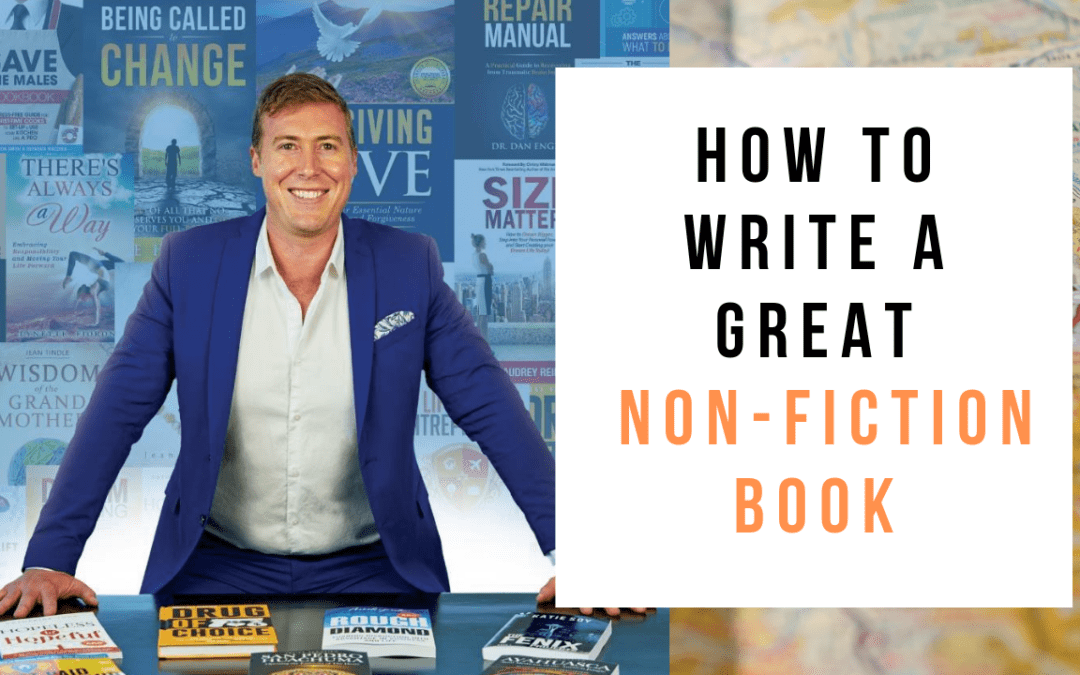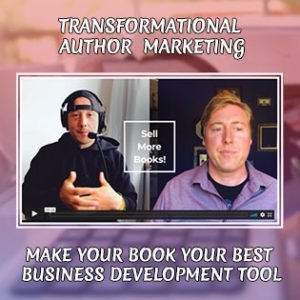Vision & Goal Setting for Your Book
Congratulations on deciding to write a book! Honestly, this is an involved undertaking, but writing and publishing a book is one of the most rewarding things you can do in life. Imagine someone you’ve never met, in a place you’ve never been buying and reading your book then telling you the impact your book has made in their life. Think about how that will feel and really see it in your mind’s eye. That is where you are going and I can tell you from deep personal experience that it feels amazing!
Creating a vision and setting goals for your book at the outset is incredibly valuable and will save you the time and frustration borne from writing without a plan. The big picture vision for your book should include how it will play into the next level of growing (or launching) your business and brand.
Strategic Planning For Your Book Launch & Beyond – To get you started writing the right way I created a video for you:
=> Download Strategic Planning Worksheet Here
By taking just a little time to create a big vision and a high-level strategic plan, you’ll already be further along than most authors who begin writing their book without one.
I’ve created an expanded description of the strategic planning process and how to create a compelling vision for your book in this post: Create a Big Vision and Set Goals for Your Book (coming soon)
Creating an Outline & Structuring Your Content
Now that you have clarity on the overarching vision for your book, let’s dive into creating an outline and structuring your content so your book makes a big impact on your readers. To get clear on how your book should flow and what content should go where, consider this question:
“From the moment someone starts reading the first page, to the moment they finish the last sentence, what has changed in your reader’s life?”
What new perspective does he have? How is she thinking about the topic differently now than before? What have they learned, discovered, or solved in their life after having read your book.
This line of questioning starts to clarify the transformation that will take place in your reader’s life as a result of reading your book. Thinking of it through the reader’s perspective is super helpful to “get out of your own way” and really focus on what information, knowledge, wisdom, stories and experience you want to impart to your reader.
How to Write a Book That Transforms Reader’s Lives – This video will help you craft the journey your reader goes on and visualize how their life will be different upon reading your book:
Another way to think about creating an outline and structuring your content is to think through how you already teach or talk about your area of expertise. Do you have a methodology that you developed? Is there a multi-part process that has helped your clients get results? What are the most important things to know about your topic and what is the best order for someone to learn them in?
These questions start to shed light on what the main sections of your book should be and how the chapters could be ordered.
Read this to go deeper: How to Write a Book Outline & Structure Your Content
Write Your Best Content First
It’s time to start writing! (…aka, holy cow what do I write first?!) When you start writing, my best advice is to write your BEST content first. Start writing about what you are most knowledgeable about, most excited to share, that has the most impact for the reader. Dive right into the deep end and get down the most valuable ideas first. You’ll feel an immediate sense of gratification by doing so, and avoid “paralysis by analysis” thinking about how or where to start.
When I wrote Lifestyle Entrepreneur: Live Your Dreams, Ignite Your Passions and Run Your Business from Anywhere in The World the first writing I did was on the actual framework I present on building a virtual business that can be run remotely. This was helpful in the sense that I didn’t spend time thinking about how to introduce myself, or which story to put at the beginning of Chapter 1, all of which is important, but ultimately a prelude to the primary topic the book is about.
You can think of this approach as starting from the inside and working your way out. You write about the thing that made you excited to write a book in the first place and pour yourself into that wholeheartedly. This starts to build momentum fast! Then from the middle, you write your way out to both sides; finishing up the writing process with your Introduction and Conclusion.
“Write your Best Ideas FIRST and Your Introduction LAST”
Build Momentum Writing Your Book
Once you’re past the starting line and have written down the beginnings of your best ideas, you should feel excited and enthusiastic that your book is coming together. Take a moment and appreciate that you are now actually writing a book, instead of talking about writing a book someday. Can you feel the difference?
Now the name of the game is building momentum and getting into a creative flow that will see you through to v1.0 of your manuscript. What I’ve seen countless times is authors start writing because they are passionate about their message and want to build credibility and become a recognized authority with a best-selling book, but worry that it takes too long to write a book and they don’t have the time.
Those are valid concerns, but if we look underneath the surface-level excuses, the real issues that come up during the writing process are of a deeper-seated nature; “Am I even qualified to write a book on this topic?” or “There’s already 20 books on this topic, what do I have to say that people haven’t heard before.” These thoughts and feelings don’t help, but they are just excuses from the ego or previous wounds trying to keep you “safe” by staying the same. Writing a book can drag all the skeletons out of the closet and focus your mind on your shadow instead of facing the light.
That is why it is important to build momentum writing through consistency and staying in touch with your big vision and goals, especially when you’re in the details of bringing your book to life.
No One Regrets Writing a Book (they only wish they started sooner) – Here is a video to motivate you any time you start getting derailed in the writing process:
Writing an Introduction as Your Final Act
As you write through your book and are creating content consistently, you come to a point where you see the light at the end of the tunnel. Yes, writing a book can feel like a never-ending journey, but just keep in mind that is a finite process. There is a beginning, a middle and an end to the process and as long as you keep at it, you’ll eventually get it all out.
Starting writing a book with an outline and a structure in mind is highly recommended, but so it giving yourself permission to call an audible and make adjustments as you’re writing. You have 100% permission to change the order of your book, write a brand new chapter, or remove a whole section of the book that no longer fits the evolving vision. Writing a book really is a balance between structure and planning versus spontaneity and creative flow.
For this reason, it is beneficial to write the Introduction as the final section you create.
A good introduction is a high-level overview of what the reader will learn and experience over the course of the book.
Once the book itself is substantially written, then it becomes easy to simply summarize and present the salient points of what you have just created.
Your Introduction should meet the reader right where they are right now, and paint a picture for how your book is going to get them where they want to be – What they will learn, what problem they will solve, what new technique they will master or what topic they will understand at a deeper level. In terms of meeting the reader where they are right now, think about the person you are writing this book for and what is going on in their head, their life, their business, their relationship right now that has led them to pick up your book. Speak to that from the very first page and you’ll hook their attention right away. From there you can pace their experience as you touch on the main topics, chapters, and ideas they will read about as each page turns.
Read Example Introductions to Best-Selling Non-Fiction Books
Complete Your Manuscript & Finish Your Book
With all of the main content in place, it is time to think about the additional content that, in total, comprises the entirety of your book. Here are some examples of sections additional to the main content in your book that are worth considering before starting the publishing process:
Acknowledgements – Who has been instrumental in you writing this book? Who’s names shall be immortalized in print that you are appreciative of whether or not they were involved in the book at all? This is a great section to spread the love around to the important people in your life and let them know how you feel.
Dedication – Is your book specifically for a a special someone? Are there a few people you would like to dedicate your book to, and what do you want to say to them? Some dedications are short and sweet, others can be a few sentences or even paragraphs. You can dedicate your book to your wife, or your readers, or anyone in between.
Works Cited / Suggested Reading – Does your book need a bibliography to catalog the books and works that made an appearance in your book? Are there specific books you would recommend your readers check out to round out their knowledge on the topic? This section let’s you credit the authors and books that influenced you, and point readers to new books they may enjoy.
Offer Pages – How can people work with you, hire you, or engage you professionally? I highly recommend including a dedicated page for each offer you have available. This could be an online training program, a live event, coaching opportunities or a podcast or blog of yours. Include a URL on each of these pages and consider providing a discount code that incentivizes readers to go further with you (and also lets you attribute new customers and clients to your book)
Celebrate and Prepare to Publish Your Book
Congratulations! You have written a book and that is a BIG accomplishment. Take a moment to reflect back on the journey and appreciate everything you learned in the process. Over 70% of all people say they want to write a book, but less than 1% ever actually do. That means you have leapfrogged everyone else who just talked about it and joined the 1% of authors who wrote an actual book 🙂
Do something to celebrate, and give yourself some time away from your manuscript to regain perspective and refocus on the big picture. The difficult part is behind you now and the next step is to begin the publishing process to bring your book to market. This transition from writing to publishing is where other people begin to get involved and your manuscript transforms to a finished book available to the world at large.
Here is an overview of the publishing process:
Editing – The right time to bring in an editor is once you have a manuscript they can evaluate in it’s entirety. A good editor will give you high-level feedback like how your book is structured, whether you should expand on certain sections, or consider revising other parts of the book, as well as detailed editorial feedback in your manuscript, marking up changes and leaving comments on the text for you to consider.
Cover Design – Your book cover is the first impression readers will have of your book. This is the visual representation of the content you’ve created and it needs to grab readers attention and compel them to pick up or download your book. Although it doesn’t sound nice, the world will judge your book by it’s cover, so invest the time and money to get it professionally designed. Take a survey of other books in your niche and notice what the best-selling books look like. How can yours both fit in as well as stand out?
Interior Design & Layout – This process completes the transformation from a “manuscript” to a “book”. The interior layout creates the reading experience and incorporates decisions like fonts used, illustrations within the text, quotes that are in breakout boxes, and any other design element that complements the text of the book.




This was really helpful!! Thanks for giving such valuable strategies! I’m excited to get going!
I enjoy Jesse’s articles and explanations, since he is actually constantly DOING this, so his emphases are the really important parts; the listing of steps and things to include provides a checklist to avoid missing some key element.
There’s a lot to read, but I try to make sure to see what’s next in what I am learning from Jesse!